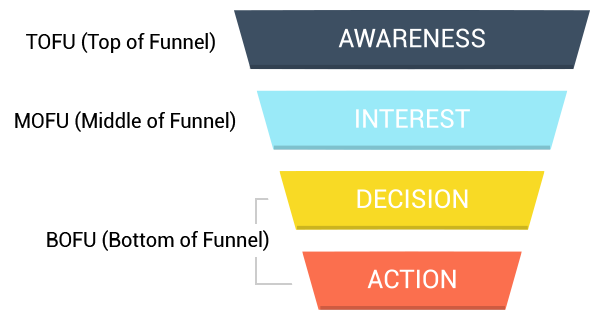How Funnel-Focused Content Planning Boosts Conversions
In this part one of a two-part series, we're digging into what kind of content your company should produce to increase organic traffic and bring in better leads. In the second part, we explore how to create a content plan for your company that does more than just build traffic. Read Part Two here.
If you're starting a blog on your company site for the first time or just starting to think about building out a content marketing strategy, chances are you're looking for topics to write about. After all, the key to building site authority through content marketing is having plenty of high-quality and relevant content.
But how do you start the content planning process? You might come up with a few good ideas at first, but it's hard to keep the momentum going, especially if you're unsure where to focus the bulk of your attention. The best system you can implement is a funnel-focused content planning process. Let's break this system down and see how to build consistently awesome content for your company's site.
The Sales Funnel
Most sales and marketing professionals are familiar with the four-step funnel: awareness, interest, decision, and action. This funnel aims to align your sales and marketing with a customer's journey for increased conversions.
So how does this apply to content planning? And how can we leverage the customer journey to develop content and move the customer through the funnel? This process is where funnel-focused content planning comes into play.
What Is Funnel-Focused Content Planning?
Simply put, funnel-focused content planning is the process of designing your content marketing strategy around addressing each specific need of the customer journey. There are three main sections within that journey:
Top of Funnel (TOFU): the customer is aware of the company and its general purpose but has yet to research more deeply into its products or services.
Middle of Funnel (MOFU): the customer shows interest in the company and is digging into some of the details of its products or services through social media, whitepapers, or webinars.
Bottom of Funnel (BOFU): the customer has established a relationship with the company through social media, webinars, product demos, or free trials and is ready to make a decision or take action.
At each stage, the customer is looking for different pieces of information to better build a relationship with your company. The responsibility of funnel-focused content planning is to find ways to provide that information in the best way possible. But it's important to know where you should be focusing your time, energy, and resources before you start building your content plan.
Where Should My Content Planning Start?
The answer to that question is where the rubber meets the road and largely depends on your company's growth journey. If you're a small startup, just getting off the ground, or a large corporation with an established revenue stream, it makes a difference where you need to focus your strategy.
BOFU versus TOFU Content
Think about what your company is currently trying to accomplish. Are you hunting for customers to fund your launch? Are you comfortable with your current customer base and looking to expand your market? Have you settled on the perfect niche within your market, or are you still working to figure out exactly who your perfect customer is?
Once you've got a better idea of your market position and journey, you can focus your attention on the right part of the funnel. For companies with a solid customer base looking to expand, TOFU content is the ticket. At this point in the funnel, content centers around how-to guides, infographics, checklists, and social media copy that builds engagement. You're looking to educate your audience about your products and services while providing unexpected value. This kind of content should spark interest so that your audience wants to dig deeper.
But for the startup or small business, the best investment is in conversion-heavy content, focusing on MOFU and BOFU. It may seem counterintuitive to start at the bottom of the funnel, at the closest point to the sale, but this is where you'll find your best leads and move forward quickly.
Content for Bottom of Funnel Leads
Your company's sales hotspot is the BOFU. At this point in the customer journey, your leads are ready to make their purchasing decisions and eager to move forward with the projects they have ahead of them. The bottom of the funnel should be free of peripheral topics or surface-level information. Instead, your BOFU customers want to see social proof and in-depth product overviews. When you start your funnel-focused content planning for BOFU customers, think of details, case studies, and specific product pages rather than general knowledge.
So how do you get great ideas for your funnel-focused content planning strategy? Start by setting up the proper process to develop and collect ideas for each step of the funnel.
See what this looks like in Part Two!
Squeeze more from your marketing.
If you like this article, be sure to sign up for The Connection, our monthly email full of tips and insights (like the article you just read) sent to you monthly.



